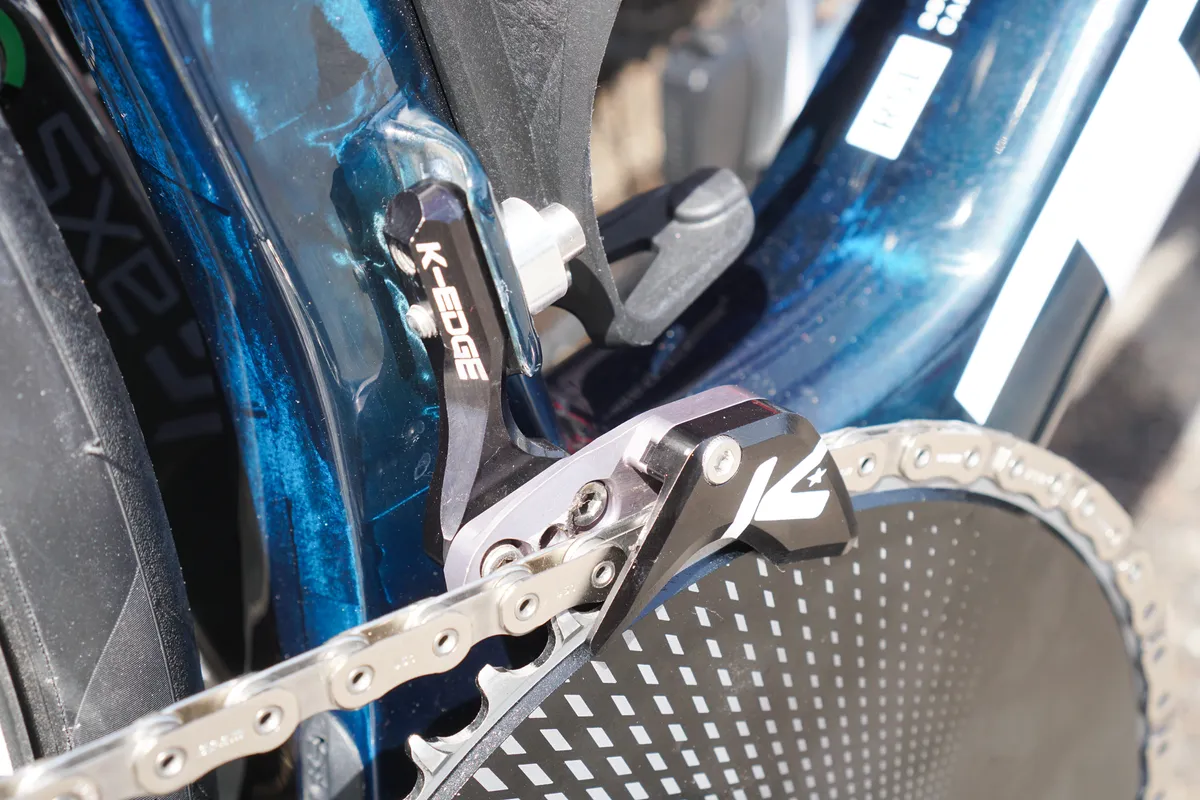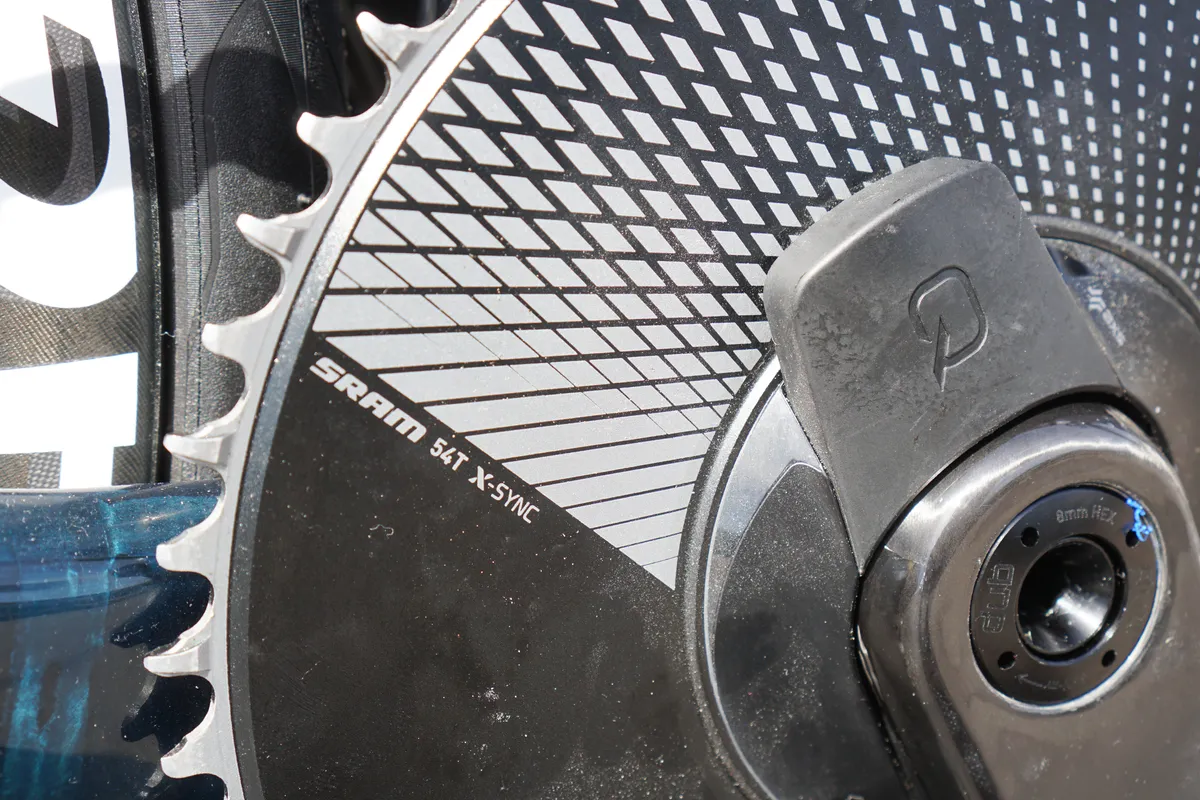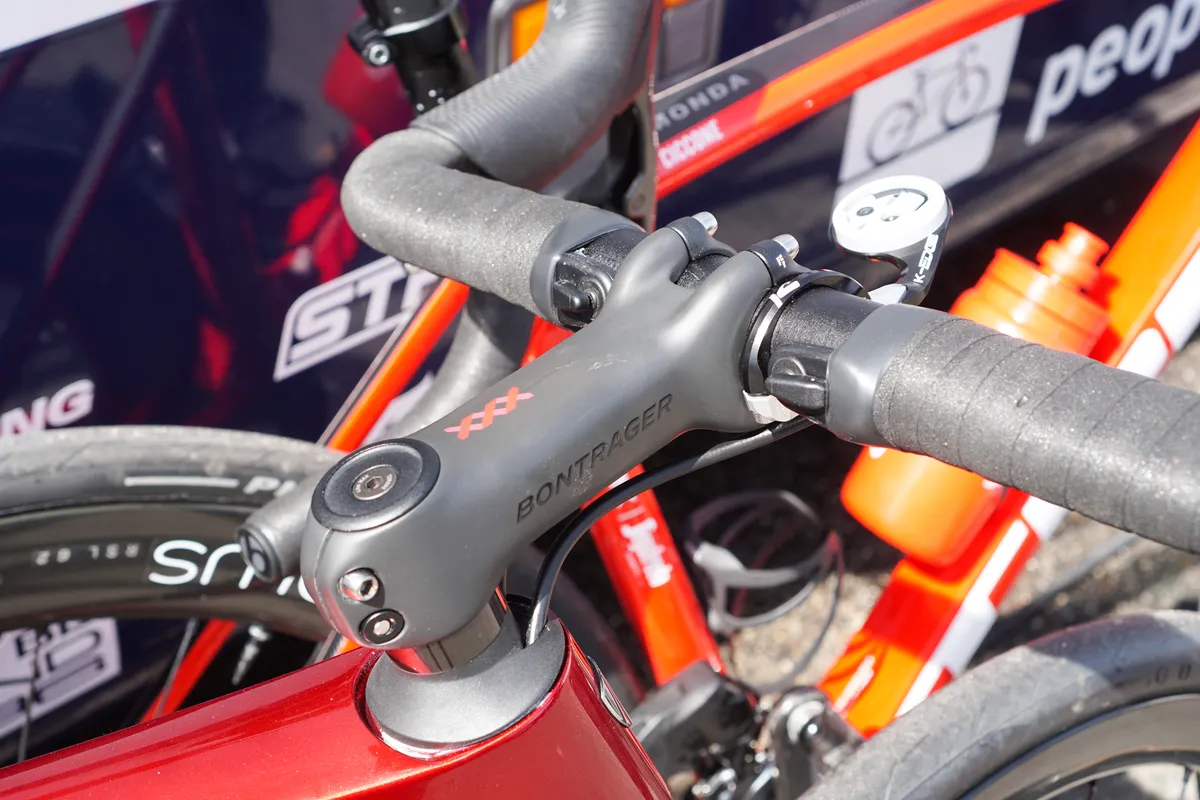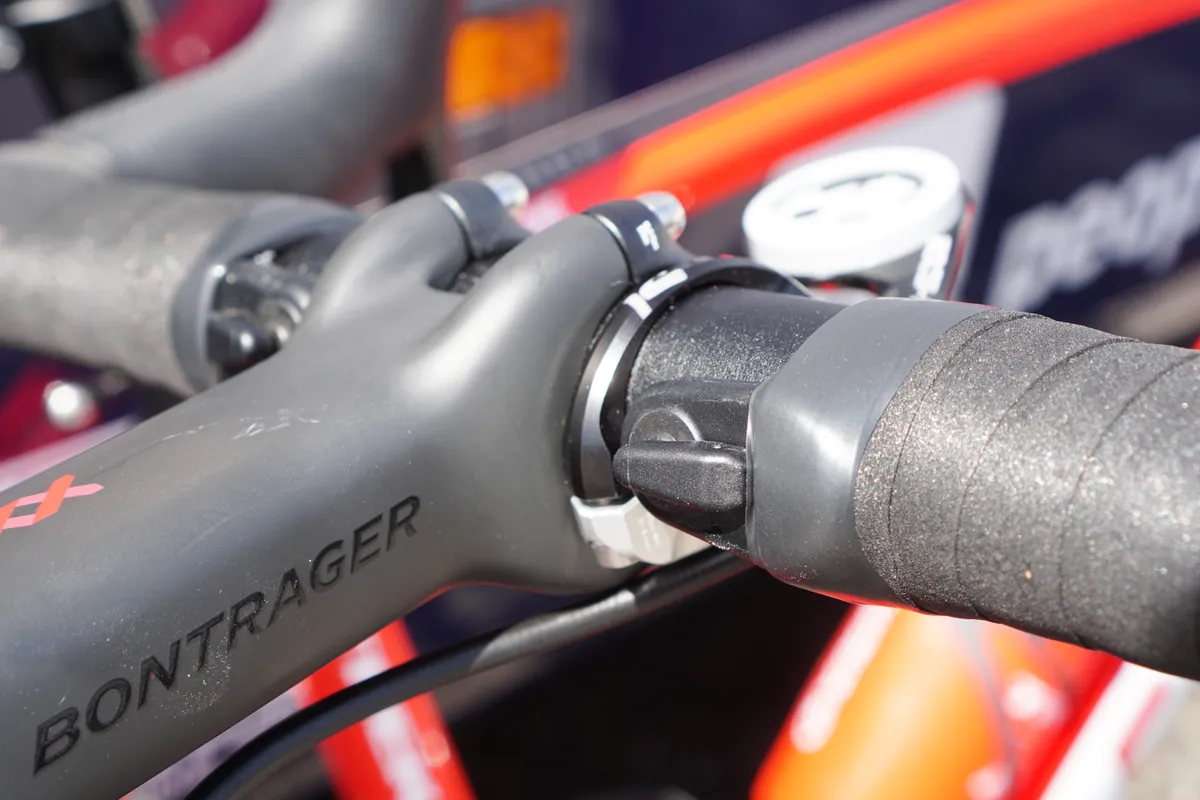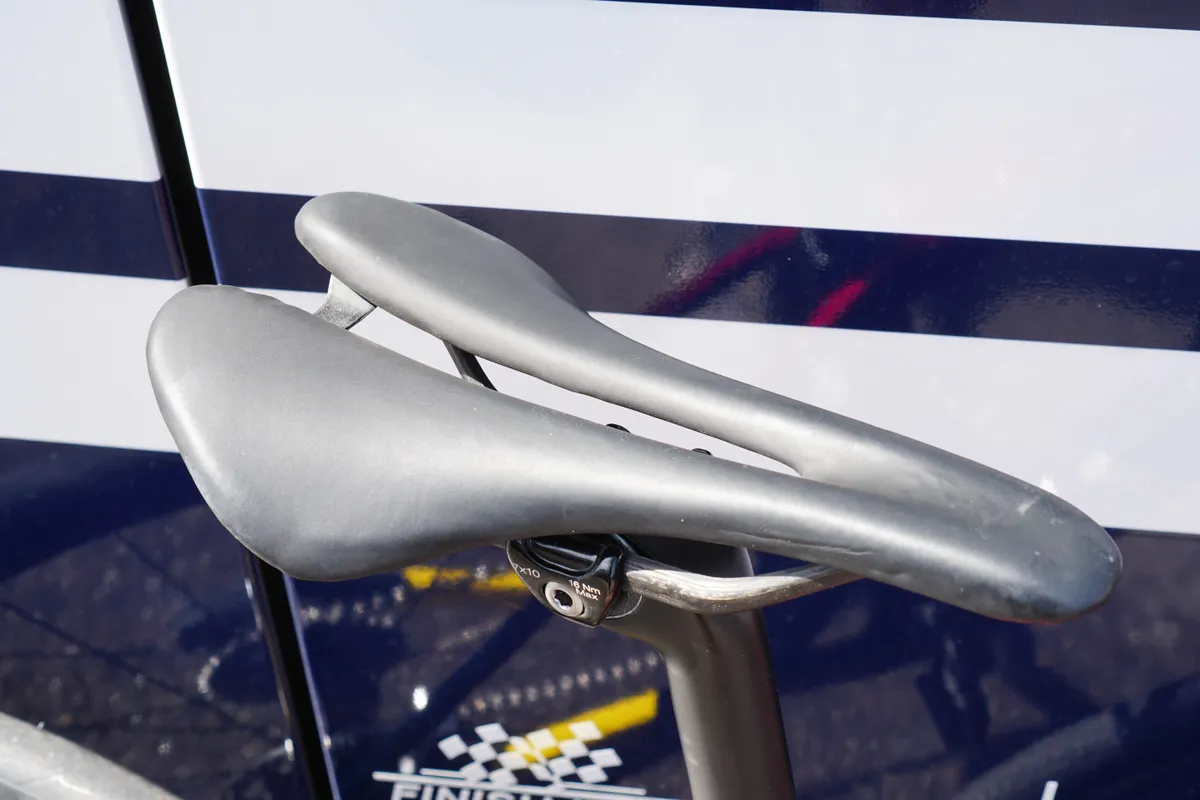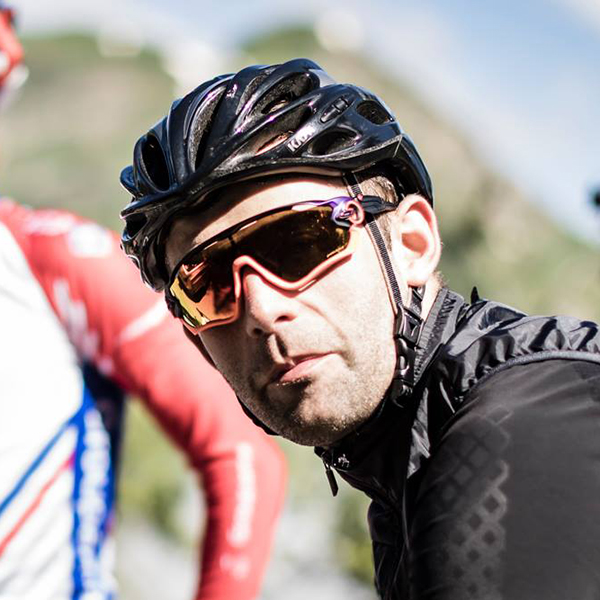While we were browsing the smørgasbord of Tour de France bikes at the Grand Départ in Copenhagen, we clocked Trek’s new Domane endurance bike propped against the Trek-Segafredo team bus.
The bike isn’t exactly brand new to the top table of the world cycling scene – it’s already been ridden to victory by Elisa Longo Borghini at Paris-Roubaix Femmes, where team-mate Lucinda Brand also took third.
It’s safe to say that it’s passed its apprenticeship and the new, as-yet-unreleased bike will also be used by Trek-Segafredo riders on the cobbles of stage five from Lille Métropole to Arenberg Porte du Hainaut on Wednesday.
The Domane has established itself as one of the best endurance road bikes out there since it was originally launched ahead of the 2012 cobbled Classics, but what can we expect from this latest version? And when will it be released?
Here’s what we know about the new Domane so far, and a more detailed look at the setup of Giulio Ciccone’s bike for the Tour de France.
2023 Trek Domane now launched
Trek has now officially launched the 2023 Trek Domane, confirming our speculation that the bike is more aero and can fit mudguards.
Trek also says the new Domane is the lightest-ever disc-equipped version of the bike, shaving 300g off the weight of its predecessor.
More aero
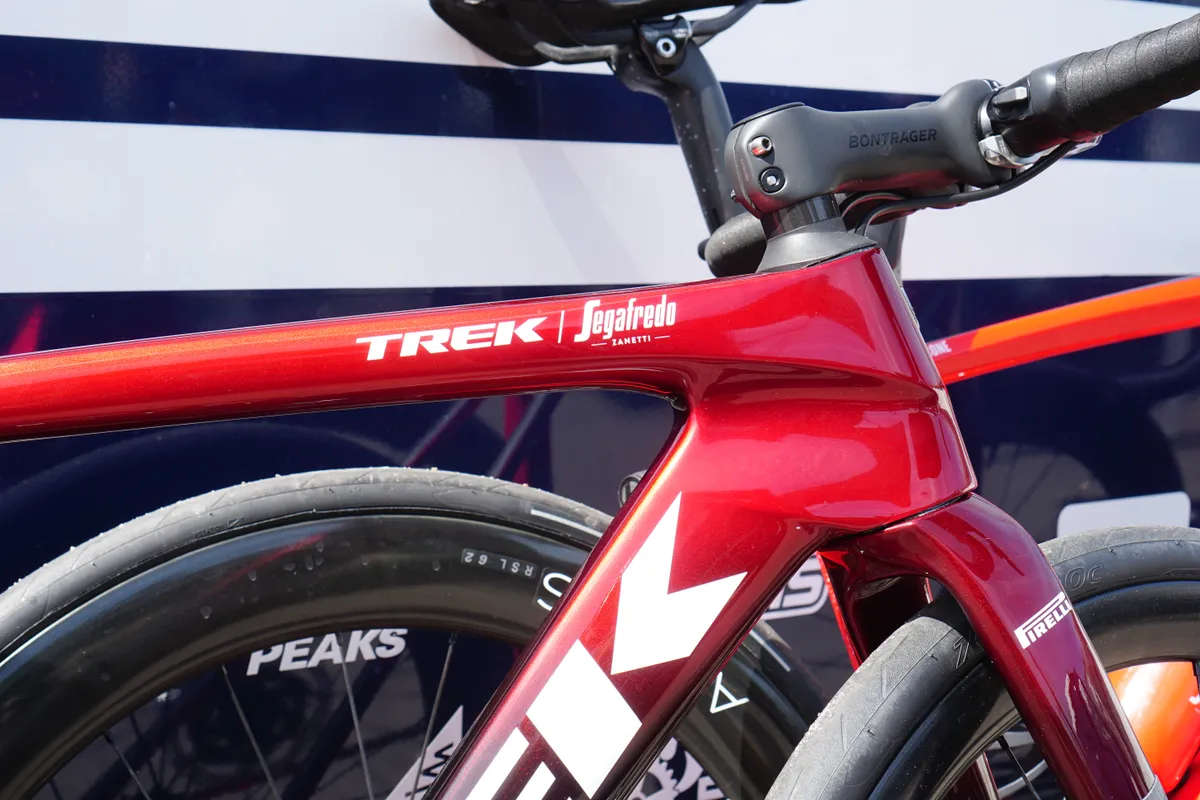
The new Domane features a deeper head tube profile than the current model, and sees a long, sculpted curve that forms a continuous line through to the top tube.
Running parallel to that, a smaller secondary sculpt is visible running from the fork crown to the down tube. Both of these, we suspect, combine to control airflow over the frame and the rider’s bluff body.
The down tube looks a little shaved down, too, complete with more squared-off rear sides that could be a nod to achieving more stability in crosswinds.
Either way, it appears as though Trek has given the Domane an aero makeover. This may be an endurance bike, but it’s one used to being ridden fast.
Simplified and rear-only IsoSpeed

Trek’s IsoSpeed technology has been a successful inclusion in its bike line-ups of recent years, having debuted on the original Domane and gone through several iterations since.
However, IsoSpeed has also had its critics for being a source of excess weight, as well as being an additional area of the bike in need of occasional servicing.
The new Trek Madone aero bike has done away with IsoSpeed completely in favour of IsoFlow (a big hole in the seat tube designed to improve aerodynamics and comfort), while the Trek has dropped the IsoSpeed decoupler from the front-end of the new Domane, and simplified it at the rear.
Starting with the front, we reckon this is a decision made to save a little weight, potentially increase rigidity through the cockpit, and make servicing a little easier. Note the brake hose routing, which now enters through the front of the head tube, rather than behind.
Although a real-world bike rider might lament the loss of IsoSpeed compliance at the front, any weight saving and ease of servicing (in labour costs alone) will be a plus, and the presence of wider tyres on the latest road bikes goes a long way to improving comfort without mechanical intervention.
The rear IsoSpeed decoupler appears to have been slimmed down, and no longer features any obvious adjustability, as present on the existing Domane.
In this Covid-affected world, we weren’t allowed to prise away the cover to see if any adjustor lurks in there alongside a clamp mechanism.
There’s also a mysterious hex bolt recess under the top tube, which clearly no longer releases the old cover on the underside of the top tube on the previous model.
This could still play a role in modulating how much compliance the new system gives, but we’ll have to wait and see whether there’s any adjustability in this latest version of the Domane’s IsoSpeed.
No more seatmast

In addition, the old seatmast has been replaced by a more ‘normal’-looking D-shaped seatpost, which now inserts directly into the seat tube.
If one of the goals of the new Domane has been to simplify the design – both in terms of dropping a harder-to-service proprietary system and saving weight – then this would seem to be a smart decision. D-shaped posts are also purported to improve comfort by offering additional flex.
Classic purveyors of the D-shape seatpost, such as BMC, Giant and Canyon, have seen good success with their solutions, so why not repeat the trick here?
What about tyre clearance?
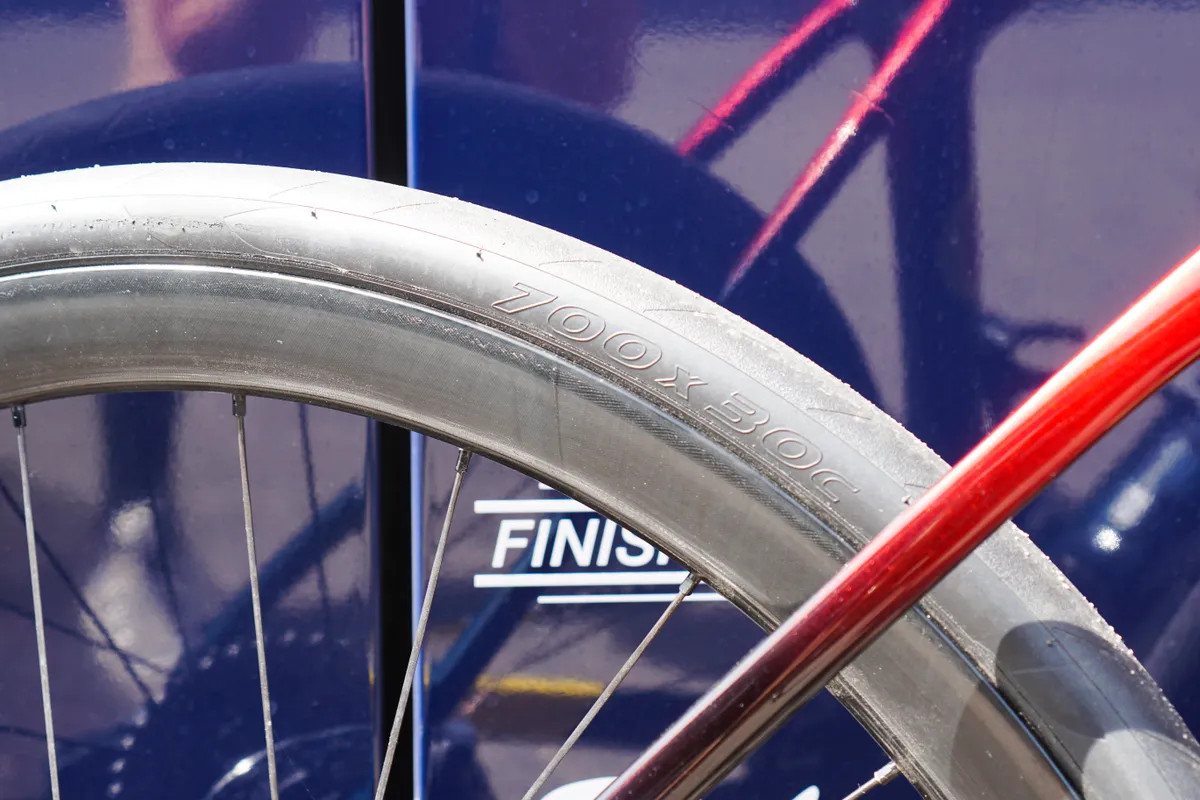
The outgoing Domane currently officially supports clearance for up to 38mm tyres, and by eyeballing the clearance left behind by Ciccone’s choice of 30mm Pirelli P-Zero Race TLR rubber, we’d say this has remained about the same.
It raises an interesting question: with Ciccone likely wanting to survive the cobbled stage five of the Tour (and save as much energy as possible on what’s set to be a tough day in the saddle for the lightweight Italian climber), has he decided that 30mm tyres and the pared-down IsoSpeed are enough to strike an optimum balance of speed and compliance?
Overall, the lack of front IsoSpeed and simplification of the rear decoupler (plus the dropping of the seatmast) suggests that both the Trek-Segafredo teams may have already found a level of compliance to suit their needs thanks to the trend towards using wider tyres.
As for the general public, more compliance could be achieved by opting for 32mm tyres, or even wider.
Can you still run mudguards?
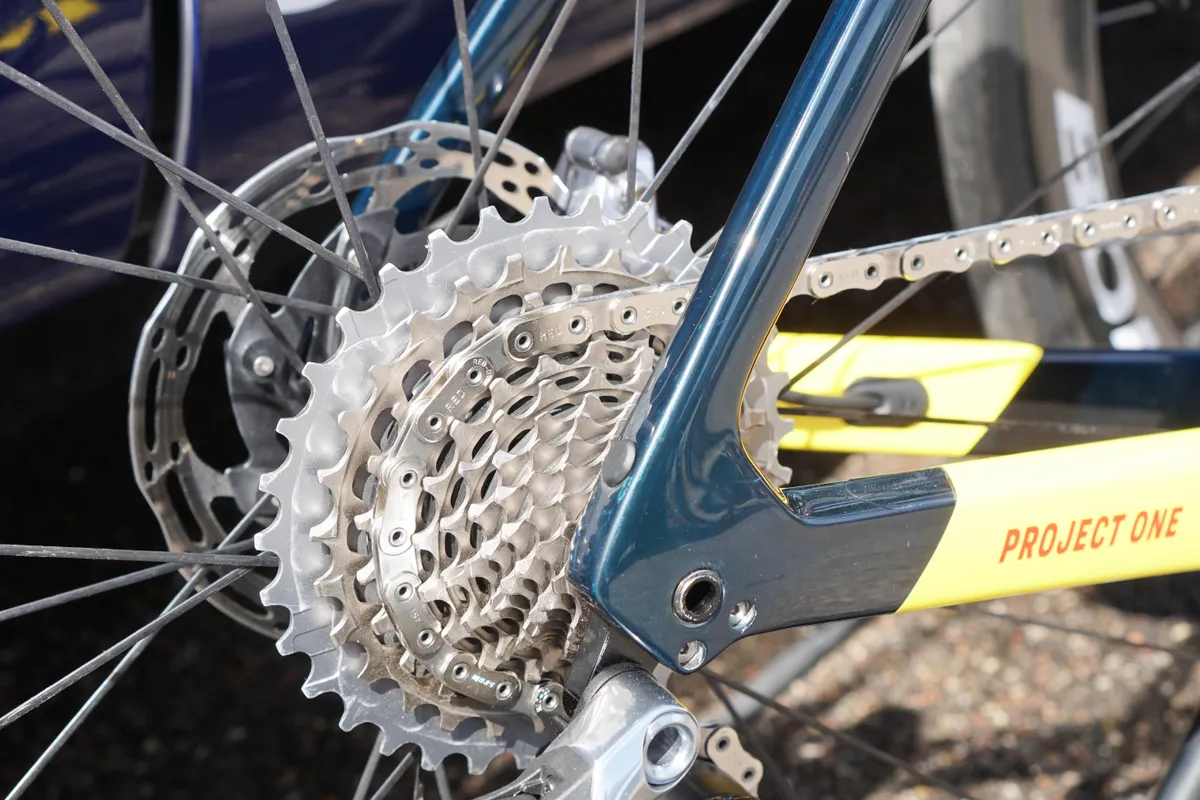
All this talk of Paris-Roubaix and the Tour de France may make the Domane feel skewed towards racing, and the fact that Trek is still pushing it as the pro team’s bike for the cobbles means that argument holds some water. But will it accept mudguards?
We spotted two bolt recesses around the rear dropout, but these are likely to be the attachment points for the hanger, rather than dedicated mudguard mounts.
Time will tell if mudguard mounts make it to the new Domane in time for its official launch. There are plenty of endurance bike examples where mudguard mounts are included, and plenty where they’re not.
Certainly in the BikeRadar office, we think they’d be helpful for pros doing their winter training, but a very welcome feature for any hardy recreational rider, too.
When will it be launched?

Trek is still quiet on the subject of launch dates, but it would make a lot of sense to see it appear around September or October time this year.
That puts it firmly in line to take advantage of any prospective winter bike buyers, as well as those after a more compliant, endurance-type all-rounder.
With component availability issues as they are across the industry, a release towards the end of the year may also give Trek more time to source parts – and offer consumer availability – for Shimano 105 Di2 builds.
That’s all we know for now. Stay tuned to BikeRadar for all the latest news around the new Domane as it lands – and let us know what you want to see in the comments below.


